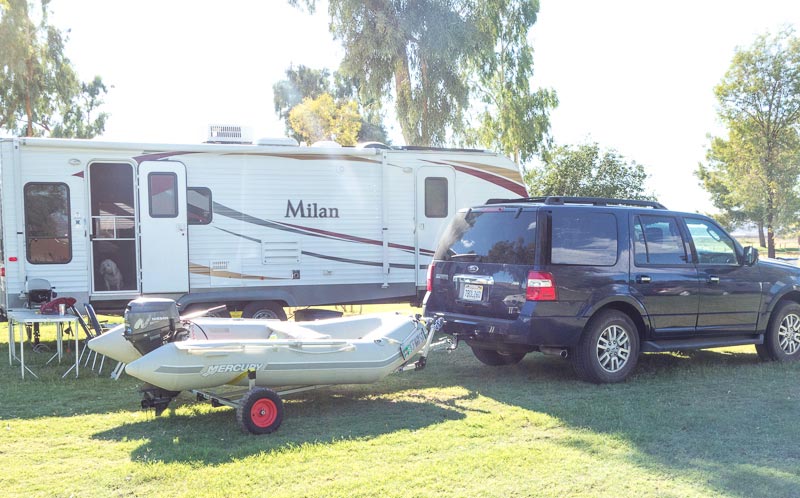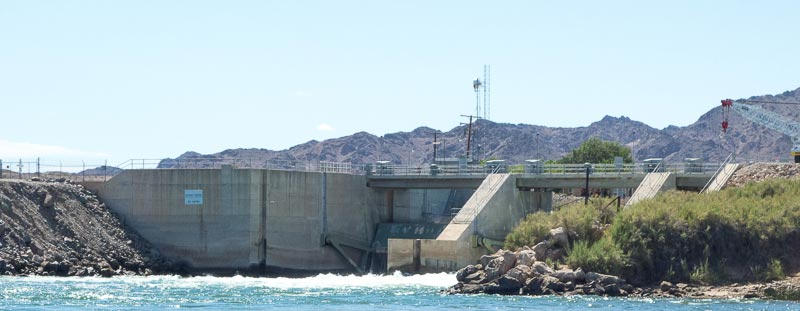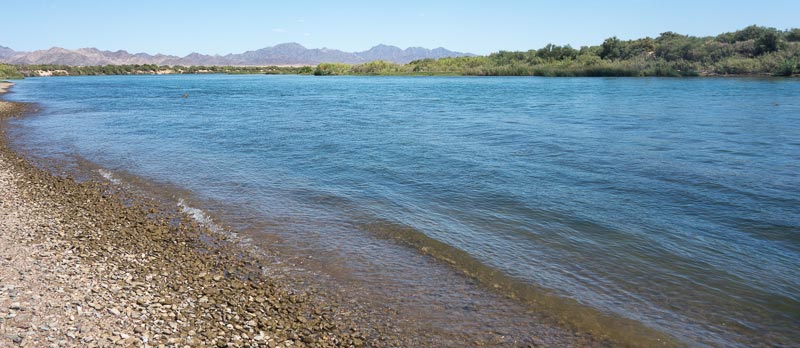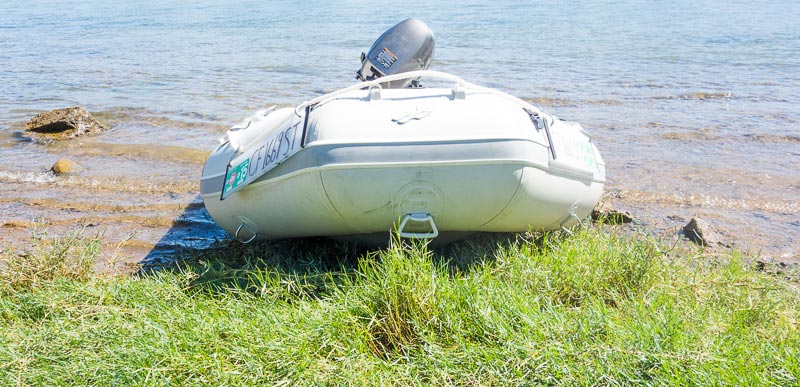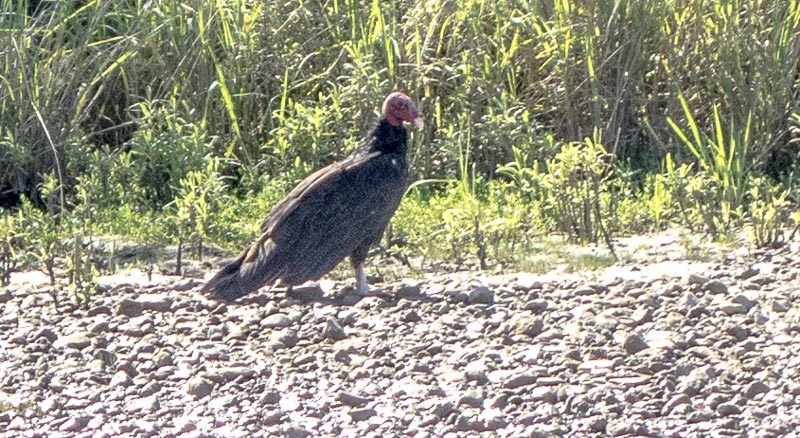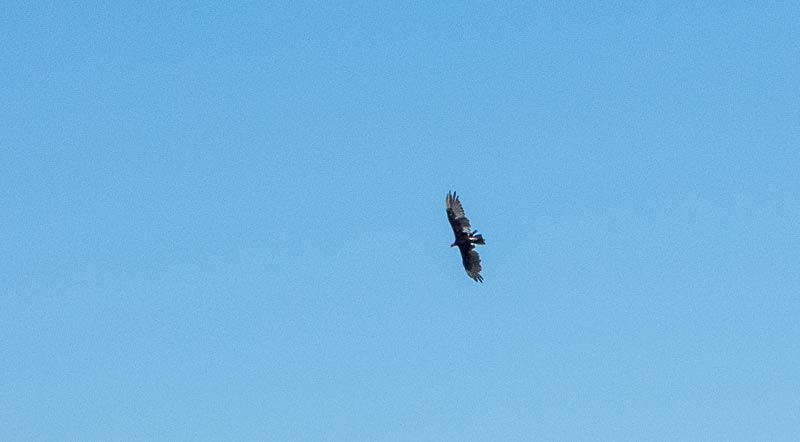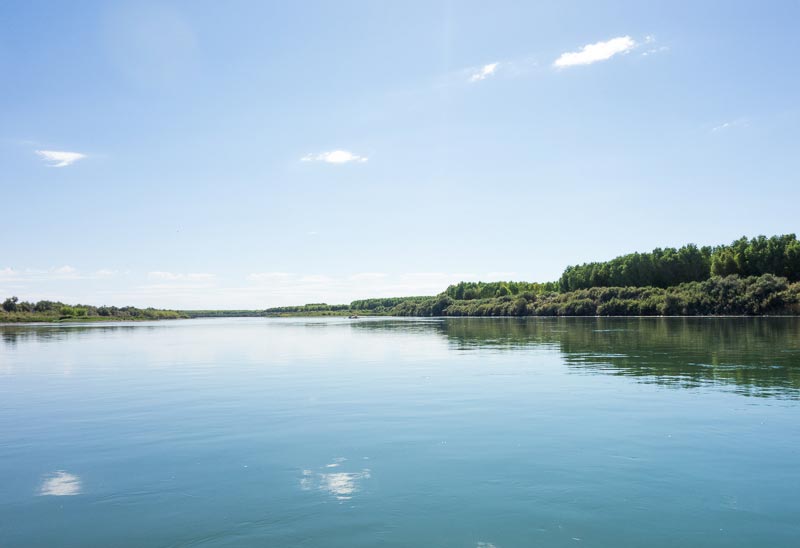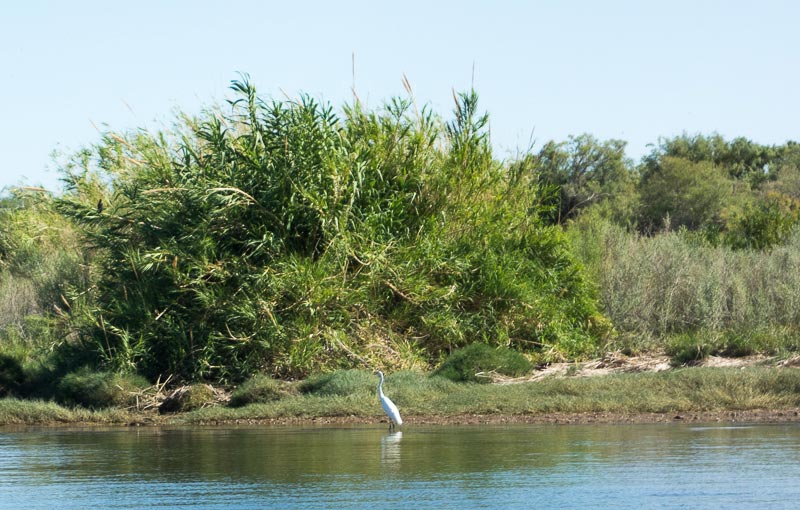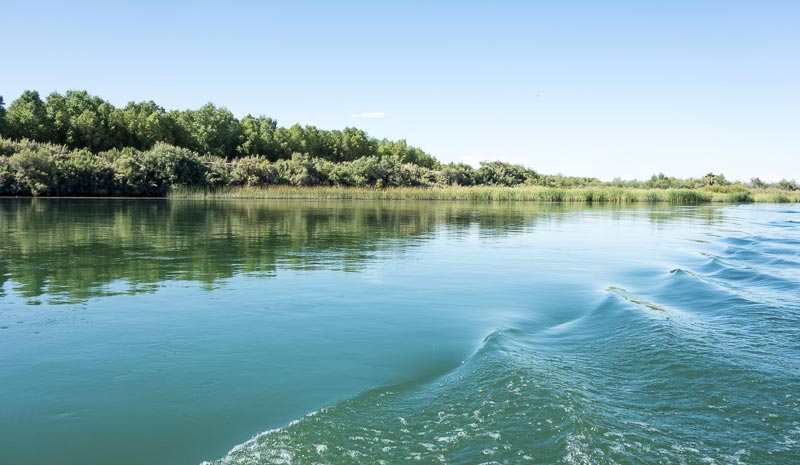Yeah, I know. Another camping trip. Ho hum.
Well, not for us. We enjoy everyone of them. After our Eastern Sierra vacation, we decided we need to start using our boat more often. The problem with a boat, especially if you live in southern California and the boat has a motor, is the fact you aren’t going to find many remote, quiet, and uninhabited places close by to camp and boat.
Another problem with places close to water that offer boating opportunities is that they also draw people with personal water craft, speed boats, skiers, etc. A good percentage of these people are crazy. Up around Parker Dam they are known as California Crazies.
So you risk your life and your sanity if you venture into a lower Colorado River campsite. The trick is to expect the absolute worst low-life creatures will overtake the entire campground. This way almost anything that happens will be less than the planned worst case scenario and you will be somewhat okay. And the worst season to experience all of this is in the summer.
So we hitched up the camper, threw the boat inside the rear door, placed the outboard motor in the SUV, and took off. We happen to know of a campground that isn’t that crowded in summer, even though there are electric hook-ups. I will admit that electricity and air conditioning are nice camping accessories when temps get up around 120F.
In about 3 hours we arrived at our destination. The highs on this trip would be a balmy 108F as forecasted, and we expected a few campers. The first two nights there were only 5 campers in the campground and the last night we were there alone. Pretty good when you consider there are 150 campsites.
Evenings were fantastic. By 11PM the temperature would get down to the low 80’s. There is nothing better than a quiet evening in the desert with a slight breeze. We enjoyed all three of our evenings by the river.
THE RIVER
At around 1450 miles in length, the Colorado River is the 7th longest river in the U.S. Given the varied environments it travels through, I think it is the most scenic — heck it formed the Grand Canyon (along with some geological events). I have been fortunate to visit many, many sections of the river either by boat or foot. From Colorado all the way to the Mexican border the river can only be described by one word — diverse.
The lower Colorado, the 222 miles below Hoover dam, has been dammed, levied, and diverted. So most of it flows at around 5-7 miles per hour, and has turned into a meek former version of itself. And this is the area we found ourselves on this trip.
In 1905-1907 the Colorado broke through an aqueduct due to high snow melts and rain and for almost 2 full years nearly the entire river flowed into the Salton Sink forming the modern Salton Sea. Today it is the largest lake in California. This “accidental” lake created by a poorly engineered canal system also allowed the Colorado River to create two new rivers; the Alamo River and the New River, both of which still flow today and continue to empty into the Salton Sea. You should Google all of this and read up on the history — all is interesting stuff.
DAM DAMS
This disaster led Congress to fund the construction of Hoover (originally Boulder) Dam, which was completed in 1935. Hoover is the largest reservoir, by volume of water, in the U.S. In general, dams are ecological nightmares.
Hoover is no exception, and many diversion dams have been constructed down-river of Hoover over the decades in order to mitigate some of the problems Hoover caused. Aside from the problems Hoover caused, Hoover potentially could not handle severe flooding and the wild buildup in Lake Mead was greater than anticipated, so another great dam was built upriver; Glen Canyon Dam. This was an even greater ecological disaster and more controversial. You might want to read some of the works of Edward Abbey, especially Desert Solitaire for one side of the debate.
Here is the problem with dams. They do a lot of damage to our environment, the full extent hasn’t been truly calculated; while at the same time provide renewable, clean energy in the form of hydroelectric power, control flooding that averts natural disasters, and provide critical irrigation and water to support millions and millions of people. The ability to control nature for the benefit of man is what separates us from the rest of the animal kingdom. So I am conflicted on the issue. So there is no need to write a long dissertation.
BACK TO OUR TRIP
The section of river we traveled has its quiet sections and busy parts. We drank in the solitary portions, explored empty lagoons, and didn’t let the busy, noisy parts affect us. With our small boat and motor we travel slowly and get to see many things 99% of the water racers never know exist. It works for us. For more about the Colorado River I recommend two books by Colin Fletcher, The Man Who Walked Through Time and River.
We didn’t take many pictures on this trip. We were too busy doing river stuff.
